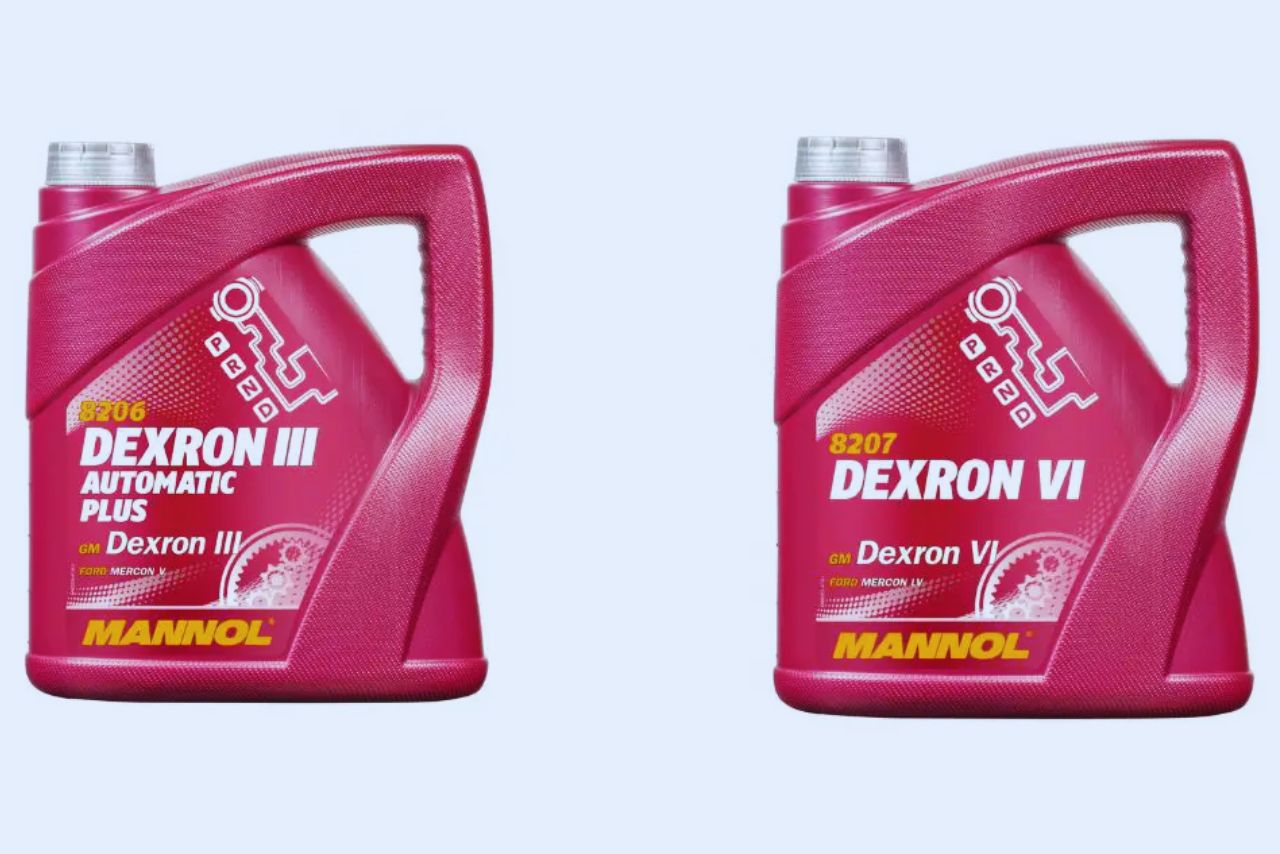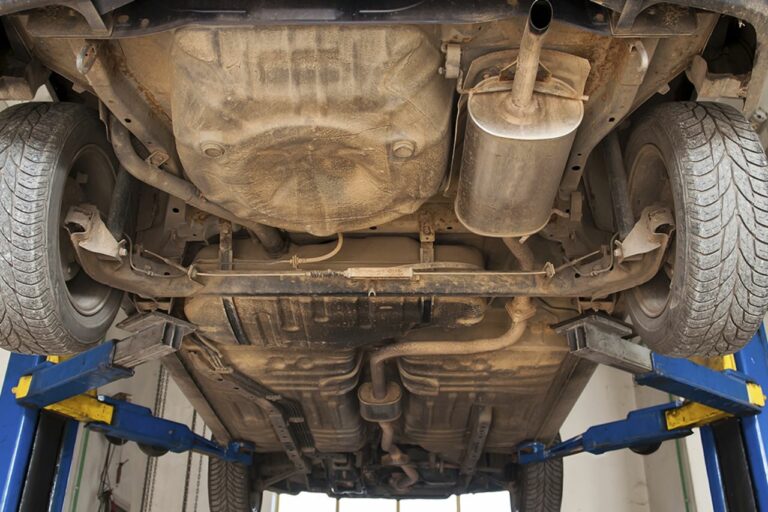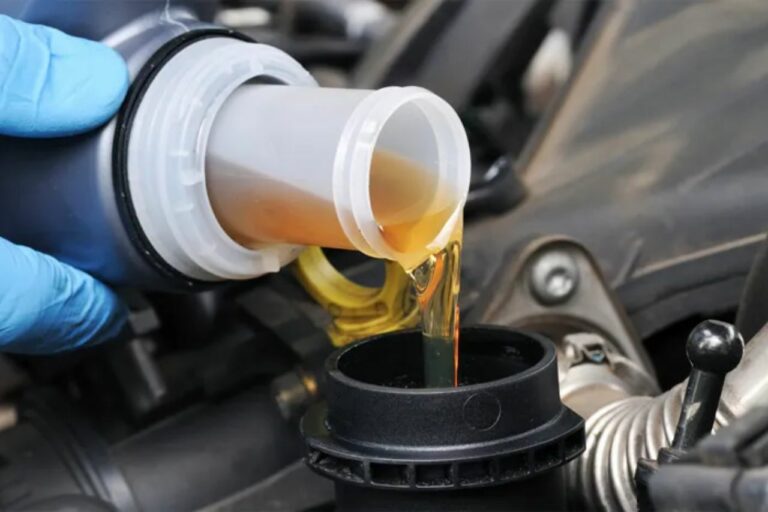Can You Mix Dexron 6 With Dexron 3? (A Definitive Answer!)

Have you ever wondered if you can mix Dexron 6 with Dexron 3 transmission fluid? The answer is not a simple yes or no.
Understanding the differences between these two fluids is essential to determine if they can be mixed without causing damage to your vehicle’s transmission.
Can You Mix Dexron 6 With Dexron 3?
While both Dexron 6 and Dexron 3 are automatic transmission fluids, they have different formulations and properties. It is not recommended to mix them as it can compromise the performance and protection of the transmission. It is always best to use the specific type of ATF recommended by the manufacturer to ensure optimal performance and longevity of the transmission.
Dexron transmission fluids are a type of automatic transmission fluid that has been developed and produced by General Motors (GM).
Dexron 3 and Dexron 6 are two of the most common types of Dexron transmission fluids used in today’s vehicles.
While they may seem interchangeable, there are significant differences between the two that can affect their compatibility.
In this article, we will delve into the details of Dexron 3 and Dexron 6, their differences, and the risks associated with mixing them.
We will also discuss when mixing is acceptable and how to determine which fluids to use in your vehicle.
Overview of Dexron Transmission Fluids:
You can mix Dexron 6 with Dexron 3, but it’s like mixing oil and water – they won’t blend well together and can cause damage to your transmission.
It is important to understand the differences between these two types of transmission fluids before considering mixing them.
Dexron 3 is a mineral-based transmission fluid that has been used in transmissions for decades, while Dexron 6 is a synthetic-based fluid that is more advanced and offers better performance and durability.
One of the benefits of using synthetic Dexron 6 is that it provides better protection against wear and tear on your transmission.
It also has a higher resistance to oxidation, which means it lasts longer and can withstand higher temperatures without breaking down.
However, it is important to note that synthetic Dexron 6 may not be compatible with other types of transmission fluids, such as Dexron 3. Mixing these fluids can cause damage to your transmission and should be avoided.
Understanding Dexron 3:
Feeling unsure about using an outdated transmission fluid like Dexron 3? While it may not be as advanced as newer fluids like Dexron 6, it still has its uses.
Dexron 3 has a number of unique properties that make it a suitable choice for older cars and trucks. For instance, it has a higher viscosity than newer fluids, which can be beneficial for engines that are prone to leaks or other issues.
However, one of the main concerns with using Dexron 3 is compatibility. Because it is an older fluid, it may not be compatible with newer transmission systems that require Dexron 6. Mixing the two fluids can cause serious damage to your transmission, leading to costly repairs.
If you are unsure about which fluid to use, it’s always best to consult your owner’s manual or a trusted mechanic to ensure that you are using the right fluid for your vehicle.
Understanding Dexron 6:
If you’re looking for a more advanced transmission fluid option, consider learning about the properties and benefits of Dexron 6. This fluid is an improvement over its predecessor, Dexron 3, and is compatible with newer transmission systems.
One of the main benefits of using Dexron 6 is its ability to withstand higher temperatures, which can help prevent breakdown and prolong the life of your transmission. It also has improved friction properties, which can lead to smoother shifting and better overall performance.
In addition, Dexron 6 has better oxidation resistance, which means it can last longer before needing to be changed.
This can save you time and money in maintenance costs. Dexron 6 is also compatible with most newer transmission systems, including those that require synthetic fluids.
However, it’s important to check your vehicle’s owner’s manual to ensure compatibility before using any transmission fluid.
Overall, Dexron 6 is a great option for those looking for a high-performance transmission fluid that can provide a range of benefits.
Differences Between Dexron 3 and Dexron 6:
Get ready to upgrade your transmission fluid game with the key differences between Dexron 3 and Dexron 6, and feel confident in your choice for your vehicle’s performance.
When it comes to automatic transmission fluids, it’s important to understand the differences between Dexron 3 and Dexron 6.
While both are compatible with most transmissions, there are some notable differences to take into consideration.
To make things easier, we’ve created a comparison table below that highlights the key differences between Dexron 3 and Dexron 6.
As you can see, Dexron 6 offers higher performance and better protection for your transmission.
It has a higher viscosity index, which means it maintains its performance in a wider range of temperatures.
Dexron 6 also has better oxidation stability, which means it won’t break down as quickly over time.
Ultimately, if you want to give your transmission the best possible protection and performance, upgrading to Dexron 6 is the way to go.
| Features | Dexron 3 | Dexron 6 |
|---|---|---|
| Viscosity Index | 171 | 188 |
| Oxidation Stability | Fair | Excellent |
| Friction Properties | Good | Excellent |
| Compatibility | Compatible with most transmissions | Compatible with most transmissions |
| Performance | Good | Excellent |
Risks of Mixing Dexron 3 and Dexron 6:
Mixing Dexron 3 and Dexron 6 could lead to potential risks for your transmission’s performance and longevity.
Here are some compatibility concerns and potential damage that may result from mixing these fluids:
- Different friction modifiers: Dexron 3 and Dexron 6 contain different types and amounts of friction modifiers. When mixed together, these modifiers can react and create an imbalance in the fluid’s properties, leading to reduced transmission performance and damage to internal components.
- Differences in viscosity: Dexron 3 and Dexron 6 have different viscosity ratings, which affect the fluid’s ability to flow and lubricate. Mixing these fluids can cause the transmission to overheat, leading to premature wear and tear on the gears, bearings, and seals.
- Incompatible additives: Dexron 3 and Dexron 6 have different additive packages that are designed to work together within each specific fluid. Mixing these fluids can disrupt the chemical balance and cause damage to the transmission’s internal components, resulting in costly repairs and downtime.
It’s not recommended to mix Dexron 3 and Dexron 6 due to compatibility concerns and potential damage to your transmission. Instead, it’s best to use the fluid recommended by your vehicle’s manufacturer to ensure optimal performance and longevity of your transmission.
When Mixing is Acceptable?
When it comes to mixing Dexron 3 and Dexron 6, it’s important to follow the manufacturer’s recommendations.
In some cases, mixing the two types of transmission fluids may be acceptable, but only if the manufacturer specifically allows it.
Additionally, in emergency situations where Dexron 3 is not available, Dexron 6 may be used as a temporary substitute, but it’s still important to consult the manufacturer’s recommendations.
Manufacturer Recommendations:
According to the manufacturer’s recommendations, it’s not advisable to combine Dexron 6 and Dexron 3 transmission fluids.
Here are some reasons why manufacturer compatibility is so important when it comes to mixing transmission fluids:
- Different formulations: Dexron 3 and Dexron 6 have different formulations, which can affect their performance when combined.
- Reduced protection: Mixing the two fluids can reduce the level of protection they offer, potentially leading to damage to the transmission system over time.
- Warranty concerns: If you mix Dexron 6 and Dexron 3, you may void your vehicle’s warranty, as using non-recommended fluids can cause damage to the transmission system.
- Safety concerns: In some cases, mixing transmission fluids can cause leaks or other issues, which can be dangerous when driving at high speeds or on steep inclines.
If your vehicle requires Dexron 6 or Dexron 3 transmission fluid, it’s best to stick with the manufacturer’s recommendations and avoid mixing the two fluids. By doing so, you can ensure that your vehicle’s transmission system is properly protected and that you don’t run into any warranty or safety concerns.
Emergency Situations:
In a pinch, it may be tempting to mix Dexron 6 with Dexron 3 transmission fluids, but it’s important to consider the potential risks and consequences.
While both fluids are designed to work with automatic transmissions, they have different formulations and can cause chemical reactions when mixed. This can result in transmission damage and costly repairs.
Preventing damage and finding alternative solutions is key in emergency situations. If you don’t have the correct transmission fluid on hand, it’s best to temporarily use a universal transmission fluid that’s compatible with your vehicle.
This will help prevent damage while still allowing you to safely drive your vehicle.
However, it’s important to note that this is only a temporary solution and the correct transmission fluid should be used as soon as possible to ensure optimal performance and prevent long-term damage.
How to Determine Which Fluids to Use?
To figure out which fluids to use, you need to understand the specific needs of your vehicle and the consequences of using the wrong fluid.
Mixing dexron 6 with dexron 3 without checking the manufacturer’s recommendations first can lead to serious damage to your car’s transmission.
Different types of fluids have different chemical compositions, which can affect their compatibility and performance in your vehicle.
Ignoring fluid maintenance and using the wrong fluid can cause your transmission to overheat, experience slippage, or fail altogether.
When determining which fluids to use, it’s important to consult your vehicle’s owner manual or contact the manufacturer directly.
Here are some things to keep in mind when selecting the right fluid for your vehicle:
- Different vehicles require different types of fluids. Check the manual or manufacturer’s recommendations to ensure you’re using the correct fluid for your car.
- Mixing different types of fluids can cause chemical reactions that can damage your vehicle’s transmission.
- Regularly checking and maintaining your vehicle’s fluid levels can help extend the life of your transmission and prevent costly repairs down the line.
Frequently Asked Questions:
Can Dexron 3 and Dexron 6 be mixed with other types of transmission fluids?
When considering mixing different types of transmission fluids, there are compatibility concerns and performance comparisons to keep in mind. It is not recommended to mix Dexron 3 and Dexron 6 with other types of transmission fluids.
Will mixing Dexron 3 and Dexron 6 affect the transmission’s performance or lifespan?
Mixing Dexron 3 and Dexron 6 won’t affect the transmission’s performance or lifespan. However, there are compatibility concerns due to differences in fluid properties. Ensure the fluids meet manufacturer specifications before mixing. Performance impact and longevity effects may vary.
Are there any specific vehicles or transmissions that require the use of only Dexron 3 or Dexron 6?
Certain vehicle models may require specific Dexron fluid requirements, such as only using Dexron 3 or Dexron 6. It is important to check your vehicle’s manual to ensure compatibility with aftermarket transmission fluids.
Is it safe to mix Dexron 3 and Dexron 6 in an emergency situation, such as a low fluid level and no access to the correct type of fluid?
In an emergency situation, you can mix Dexron 3 and Dexron 6. However, there are compatibility concerns and performance implications that may arise. It is always best to use the recommended fluid to ensure proper transmission performance.
Can mixing Dexron 3 and Dexron 6 cause any damage to the transmission or other components of the vehicle?
Mixing Dexron 3 and Dexron 6 can compromise transmission fluid compatibility, leading to potential risks such as reduced performance and premature wear. Proper fluid maintenance is crucial in avoiding damage to the transmission and other vehicle components.
Conclusion: Can You Mix Dexron 6 With Dexron 3?
Dexron 3 and Dexron 6 are both automatic transmission fluids with different formulations and properties.
Dexron 3 is an older specification that has been replaced by Dexron 6, which offers improved performance and protection for modern transmissions.
While it may be tempting to mix the two fluids, it is not recommended as it can compromise the performance and protection of the transmission.
Mixing the two fluids can result in reduced lubrication, increased wear, and even transmission damage.
It is always best to use the specific type of ATF recommended by the manufacturer to ensure optimal performance and longevity of the transmission.






